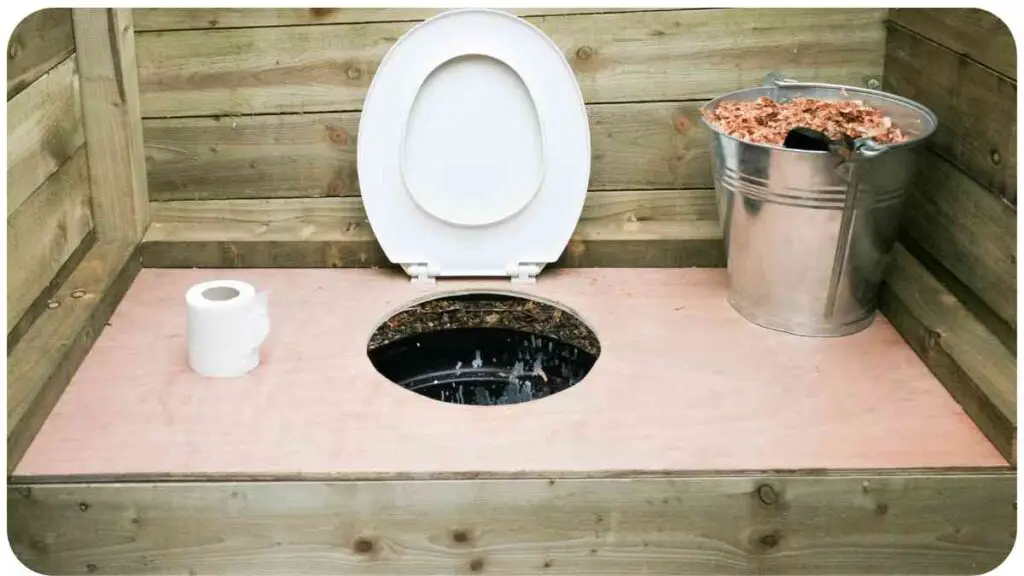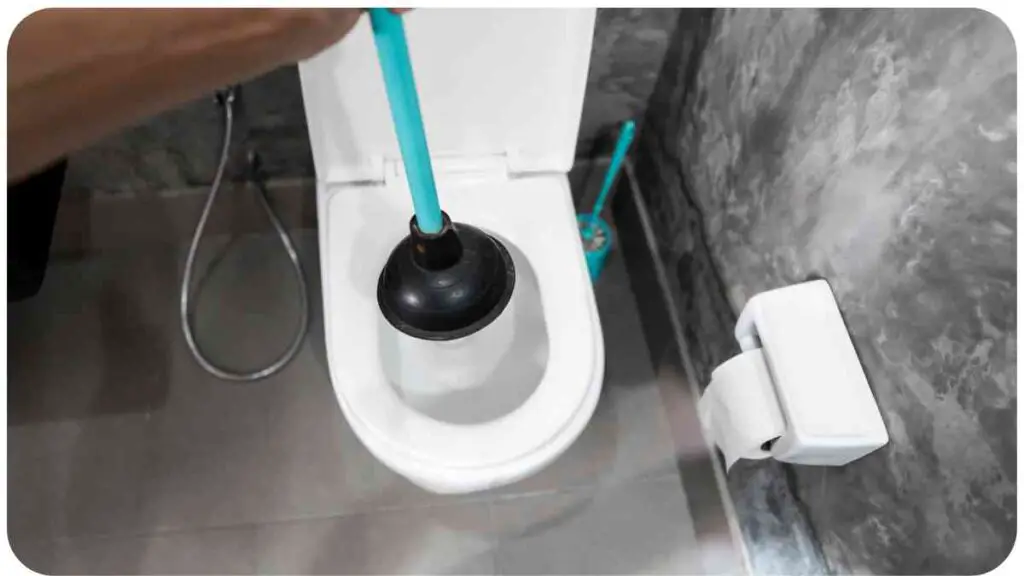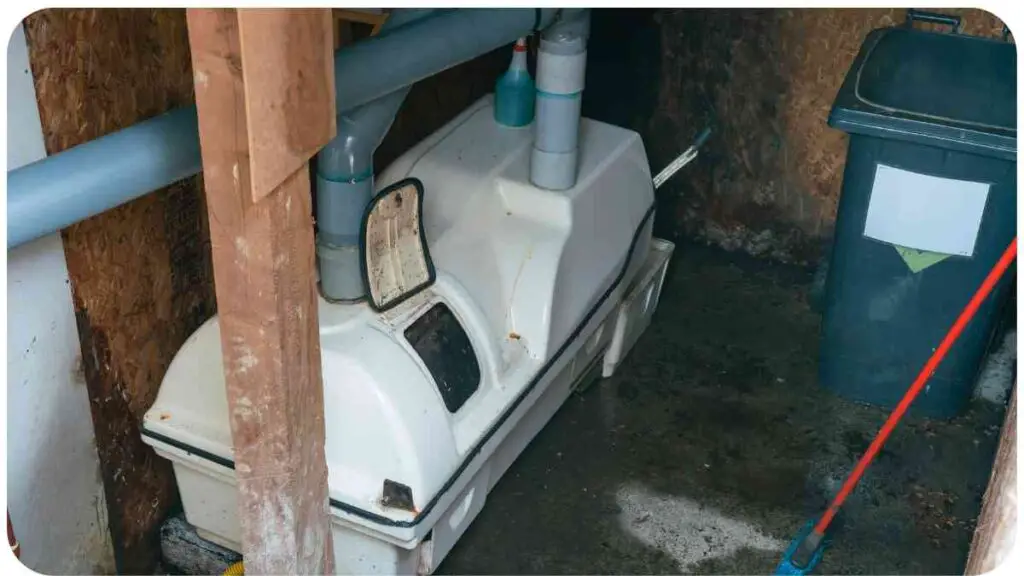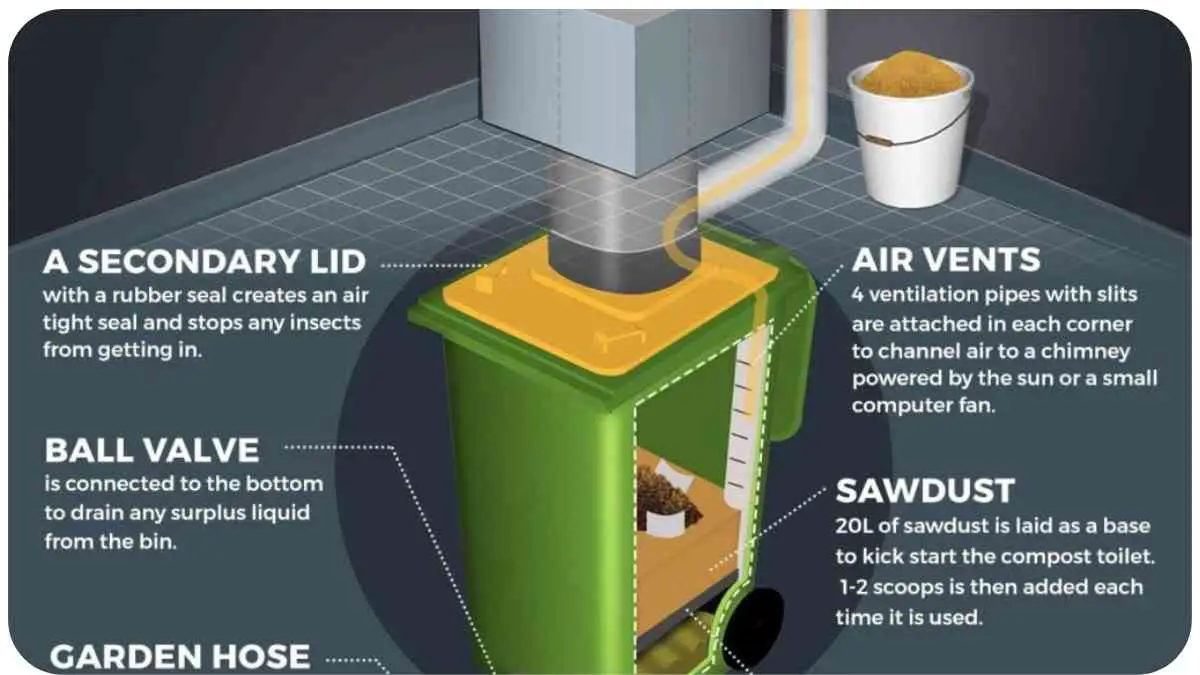Composting toilets are a fantastic eco-friendly alternative to conventional flushing toilets, saving countless gallons of water and reducing our carbon footprint. However, like any other system, they come with their own set of challenges. In my years of working with composting toilet systems, I’ve gathered a wealth of practical knowledge which I’m eager to share with you.
| Takeaways |
|---|
| Understanding the basics of composting toilets is crucial for effective troubleshooting and maintenance. |
| Regular maintenance, including moisture balance and proper ventilation, is key to preventing common problems like odors. |
| Educating users on correct usage can significantly reduce issues and improve the composting toilet experience. |
| Innovative designs and advancements in composting toilet technology have enhanced efficiency and user-friendliness. |
| Composting toilets are a viable eco-friendly alternative with positive environmental impacts including water conservation and waste reduction. |
| Community initiatives and education can drive the adoption and successful implementation of composting toilets. |
| A wealth of resources, both online and offline, are available for further learning and troubleshooting composting toilet issues. |
| Engaging with a community of composting toilet users and experts can provide valuable insights and support. |
| Compliance with local regulations is essential for hassle-free use of composting toilets. |
| Real-world experiences and success stories illustrate the rewarding nature of adopting composting toilets, both on an individual and community level. |
Background of Composting Toilets

Composting toilets have been around for quite a while, providing a waterless solution to human waste disposal. They operate by decomposing and evaporating the waste, converting it into useful compost. This is not only environmentally friendly but also a cost-effective solution.
Discover the eco-conscious benefits of green home decor and how it complements eco-friendly practices like composting toilets. Transform your living space sustainably
Importance and Benefits
The significance of composting toilets goes beyond just being eco-friendly. They are a practical solution in areas with water scarcity, and they promote waste recycling, turning a problem into a potential garden resource.
Understanding the Basics
How Composting Toilets Work
Composting toilets are simple yet ingenious. They separate liquid from solid waste, facilitating the evaporation of liquids and the decomposition of solids into compost. The process is aided by microorganisms, which break down the waste into a harmless, nutrient-rich substance.
Components and their Functionality
Each component of a composting toilet plays a crucial role in its effectiveness. From the vent system that helps in odor control to the composting chamber where the magic happens, understanding these components is key to troubleshooting.
Table: Comparison between Composting Toilets and Traditional Toilets
| Feature | Composting Toilets | Traditional Toilets |
| Water Usage | Minimal to None | High |
| Waste Disposal | Eco-friendly | Can be wasteful |
| Installation | Can be DIY | Professional Needed |
| Maintenance | Regular Monitoring | Less Frequent |
| Cost | Initial Investment can be high | Lower upfront, ongoing water costs |
Common Problems Encountered

Moisture Level Issues
The right moisture level is critical for the composting process. Too wet, and the compost will rot, producing a foul smell. Too dry, and the composting process halts. Through my experiences, I’ve found that maintaining a good balance requires a bit of attention but is quite manageable once you get the hang of it.
Learn the art of zero-waste living on a budget and find ways to save money while embracing eco-friendly solutions, including composting toilets.
Odor Problems
Odor issues are a common gripe with composting toilets. However, with the right balance of moisture and proper ventilation, odor can be effectively managed. I’ll share some tips and fixes to keep your composting toilet smelling fresh.
Incorrect Usage
Composting toilets require a different usage approach compared to traditional toilets. Incorrect usage can lead to a plethora of problems. Education on the correct use and maintenance is crucial for a hassle-free experience.
Table: Common Problems and Causes
| Problem | Possible Causes |
| Bad Odor | Excess Moisture, Lack of Ventilation, Incorrect Usage |
| Too Wet | Overuse, Incorrect Separation, Lack of Bulking Material |
| Too Dry | Insufficient Use, Lack of Moisture, Excessive Ventilation |
Delving into Moisture Problems
Identifying Moisture Issues
Moisture problems can be quite apparent when using composting toilets. If the compost is too wet, it might have a slimy appearance and a strong, unpleasant odor. Conversely, if it’s too dry, the composting process slows down, leading to accumulation of unprocessed waste. Through my journey, I’ve always kept a keen eye on the compost’s texture, which speaks volumes about its moisture content.
Unlock the secrets of reducing your carbon footprint through efficient practices and discover how composting toilets contribute to a greener lifestyle.
Solutions to Moisture Problems
Solving moisture issues is integral for the smooth operation of composting toilets. Adding bulking agents like sawdust or straw can absorb excess moisture, while adding a bit of water can remedy dry compost. Ventilation adjustments can also play a part in managing moisture levels.
Table: Solutions to Various Moisture Level Problems
| Issue | Solution | Tips |
| Too Wet | Add bulking material like sawdust or straw | Start with a small amount, and add more if needed |
| Too Dry | Sprinkle a little water | Do not overdo it; a little moisture goes a long way |
| Bad Odor due to Moisture | Improve ventilation, add bulking material | Regular stirring can also help in aerating the compost |
Tackling Odor Issues
Identifying the Source of Odor
Odor problems can emanate from various sources: it might be due to excess moisture, lack of ventilation, or a buildup of uncomposted material. Through the years, I’ve developed a nose (quite literally) for identifying the cause of the odor, making the remediation process much quicker.
Solutions for Odor Control
A well-ventilated composting toilet should not have a bad odor. Effective ventilation, addition of carbon-rich materials, and regular maintenance are your best friends in combating odor issues. Additionally, using additives like compost starter can expedite the composting process, reducing the chance of odor problems.
Explore how the future of fashion aligns with eco-friendliness, echoing the principles of sustainability seen in composting toilets.
Table: Various Odor Solutions and Their Efficacy
| Solution | Effectiveness | Tips |
| Improved Ventilation | High | Ensure vents are clear and functioning properly |
| Carbon-rich Materials | Moderate to High | Materials like sawdust, peat moss or coconut coir work well |
| Compost Starter | Moderate | Can be particularly effective for new composting toilet setups |
Addressing Incorrect Usage

Common Mistakes Made by Users
It’s not uncommon for individuals to treat composting toilets like traditional ones. However, throwing trash or non-biodegradable items can cause blockages and hinder the composting process. Incorrect usage can lead to a myriad of problems which can be avoided with the right knowledge and practices.
Educating Users
Education is key. Informing users about the do’s and don’ts, and providing clear instructions can go a long way in preventing misuse. Over the years, I’ve seen a notable difference in the operation of composting toilets with well-informed users.
Get the ultimate guide to energy-efficient appliances and see how they complement the eco-friendly ethos of composting toilets, reducing your environmental footprint
Table: Mistakes and Recommended Solutions
| Common Mistakes | Recommended Solutions |
| Throwing trash into the toilet | Provide a separate trash bin, and clear signage |
| Using the wrong kind of toilet paper | Recommend biodegradable or septic-safe toilet paper |
| Overuse without proper maintenance | Educate on the importance of regular maintenance, provide a maintenance schedule |
Maintenance: The Key to Smooth Operation
Regular Checkups
Routine checkups are crucial to ensure your composting toilet is functioning optimally. Over the years, I’ve marked down a simple monthly checklist that ensures all components are in working order. Regular assessments can catch potential problems early and keep the system running smoothly.
Cleaning and Upkeep
A clean composting toilet is a happy composting toilet. Regular cleaning helps in controlling odors, managing pests, and ensuring the system is hygienic for users. Employing natural cleaners like vinegar and baking soda can keep the unit sparkling without hindering the composting process.
Table: Maintenance Schedule and Procedures
| Frequency | Task | Tips |
| Daily | Check for odors | Address odor issues promptly |
| Weekly | Add bulking material | Ensure proper moisture balance |
| Monthly | Inspect ventilation | Clear any blockages in the vent system |
| Quarterly | Empty compost chamber | Follow local regulations for compost disposal |
Innovations in Composting Toilet Technology
Modern Designs
The world of composting toilets has come a long way with modern designs making them more user-friendly and less maintenance-intensive. Innovations like advanced ventilation systems, better sealing to prevent odors, and efficient composting chambers have significantly improved the user experience.
Efficiency Enhancements
Increased efficiency in newer models reduces maintenance needs and speeds up the composting process. Utilizing my expertise, I’ve always stayed on top of the latest advancements, which in turn has significantly improved my ability to troubleshoot and maintain various composting toilet systems.
Table: Comparison of Old vs New Composting Toilet Designs
| Feature | Old Design | New Design |
| Ventilation System | Basic | Advanced |
| Odor Control | Less Effective | Highly Effective |
| Maintenance Needs | High | Lower |
| Composting Efficiency | Moderate | High |
Legal and Environmental Implications
Regulations Surrounding Composting Toilets
Navigating the legal landscape surrounding composting toilets can be a bit complex. However, with a bit of research and consultation with local authorities, it’s manageable. Ensuring compliance with local regulations is crucial for a hassle-free experience.
Environmental Impact
The positive environmental impact of composting toilets is undeniable. They save water, reduce pollution, and create valuable compost. Over the years, the satisfaction of making an eco-friendly choice has been a significant driving factor in my continued involvement in this field.
Table: Legal Regulations in Various Regions
| Region | Regulation Summary |
| USA | Varies by state, some require NSF certification |
| Canada | Provincial regulations apply |
| EU | Must comply with local sanitation codes |
| Australia | Subject to state and local regulations |
Community and Social Aspects
Acceptance and Adoption
The acceptance and adoption of composting toilets vary widely across different communities. Some are quick to embrace the eco-friendly aspects, while others might take some convincing. Over the years, I’ve engaged in numerous community education campaigns to promote the benefits of composting toilets, and the reception has been largely positive.
Community Initiatives
Community-driven initiatives can significantly drive the adoption of composting toilets. Such initiatives often involve local workshops, demonstration projects, and group purchases to reduce costs. These communal efforts can also foster a sense of shared responsibility and maintenance, ensuring the longevity and success of composting toilet projects.
Table: Case Studies of Community Adoption
| Location | Initiative Summary | Outcome |
| Sweden | Community workshops on composting toilets | Increased local adoption |
| New Zealand | Group purchases and installation | Cost reduction, higher uptake |
| USA (Vermont) | Demonstration projects in local schools | Education and awareness raised |
Personal Experiences and Anecdotes
Challenges Faced
Every composting toilet setup presents its own set of challenges. Whether it’s battling strict local regulations, educating users, or troubleshooting unexpected problems, the journey has been a learning curve. Each challenge overcome has further enriched my practical knowledge and expertise in the field.
Success Stories
The success stories are numerous and incredibly rewarding. From seeing communities come together to adopt eco-friendly practices, to witnessing the transformation of barren lands into lush gardens with the help of compost, the positive impact of composting toilets extends far beyond just waste management.
Professional Tips and Recommendations
For New Users
For those new to composting toilets, understanding the basics and following the manufacturer’s guidelines for use and maintenance is crucial. Additionally, connecting with experienced users and joining local or online communities can provide invaluable insights and support.
For Existing Users
For seasoned composting toilet users, staying updated on the latest maintenance practices, and being open to trying new bulking materials or maintenance products can help in keeping the system running smoothly. Engaging with a wider community can also provide new perspectives and solutions to common challenges.
Table: Tips for Various Scenarios
| Scenario | Tips |
| Starting with Composting Toilets | Understand the basics, Follow manufacturer guidelines |
| Troubleshooting Issues | Seek advice from experienced users, Don’t hesitate to contact manufacturer support |
| Enhancing Composting Efficiency | Experiment with different bulking materials, Ensure proper ventilation |
Resources for Further Learning
Books and Manuals
Investing time in reading books and manuals about composting toilets can significantly enhance your understanding and ability to troubleshoot issues. Over the years, I’ve amassed a small library of resources that have been invaluable in honing my expertise.
Online Resources
Online forums, blogs, and instructional videos are fantastic resources for both new and experienced composting toilet users. They provide a platform for sharing experiences, asking questions, and learning from others in the community.
Table: Recommended Reading and Resources
| Resource Type | Title/Platform | Description |
| Book | The Humanure Handbook | Comprehensive guide on composting human waste |
| Online Forum | Permies.com | Forum section dedicated to composting toilets |
| Video | YouTube Composting Toilet Playlists | Variety of tutorials and user experiences |
Expert Opinions and Reviews
What Experts Say
Experts in the field often provide insightful reviews and opinions on different composting toilet models and maintenance products. Their experience and knowledge can be a great guide in making informed decisions.
User Reviews
User reviews are a goldmine of practical information. They provide real-world insights into the day-to-day use and maintenance of composting toilets. Over the years, I’ve found user reviews to be an incredibly useful tool in staying updated on the latest developments in composting toilet technology.
Table: Expert Opinions and Ratings
| Composting Toilet Model | Expert Rating | User Rating |
| Nature’s Head | 4.5/5 | 4.3/5 |
| Separett Villa 9215 | 4.7/5 | 4.6/5 |
| Sun-Mar Excel | 4.2/5 | 4.0/5 |
Conclusion
The journey through the world of composting toilets, although occasionally challenging, is immensely rewarding. Not only do composting toilets contribute to water conservation and waste reduction, but they also provide an eco-friendly solution to a basic human need. Through understanding their workings, addressing common issues, and regular maintenance, composting toilets can serve us well while minimizing our environmental footprint.
The plethora of resources available, along with a supportive community, makes adopting and maintaining composting toilets a viable and rewarding endeavor. Whether you’re new to composting toilets or have been using them for years, there’s always more to learn and share in this ever-evolving field.
Further Reading
- Nature’s Head Troubleshooting Guide
This guide provides practical solutions to common problems faced by Nature’s Head composting toilet users. It’s a handy resource for troubleshooting and general maintenance. - 5 Most Common Composting Toilet Mistakes
Throne Composting Toilet highlights the common mistakes made by users and how to avoid them. This is a great read for both new and seasoned composting toilet users to ensure smooth operation. - WebGardner Composting Toilet Problems Guide
WebGardner discusses common composting toilet problems and how to resolve them. This resource is beneficial for those looking to understand and fix issues with their composting toilets.
FAQs
What are the benefits of using a composting toilet?
Composting toilets are environmentally friendly, conserving water, reducing sewage pollution, and producing valuable compost that can be used to enrich soil.
How do composting toilets work?
Composting toilets separate liquid from solid waste. The solids are composted into a safe, nutrient-rich material with the help of microorganisms, while liquids are usually evaporated or drained away.
What can be done to prevent odor problems in composting toilets?
Effective ventilation, proper moisture balance, and regular addition of bulking materials like sawdust or straw can significantly help in controlling odors in composting toilets.
How should composting toilets be maintained?
Regular checkups, cleaning, and the addition of bulking material as needed are crucial for the maintenance of composting toilets. Also, ensuring the ventilation system is functioning correctly is essential for odor control and effective composting.
Are composting toilets legal everywhere?
The legality of composting toilets varies by region and is subject to local sanitation codes and regulations. It’s advisable to check with local authorities or relevant agencies before installing a composting toilet.

I am Hellen, I’ve been passionate about sustainability for as long as I can remember. It’s something that my mom taught me from a young age, and it’s something that has shaped my life in so many ways.

